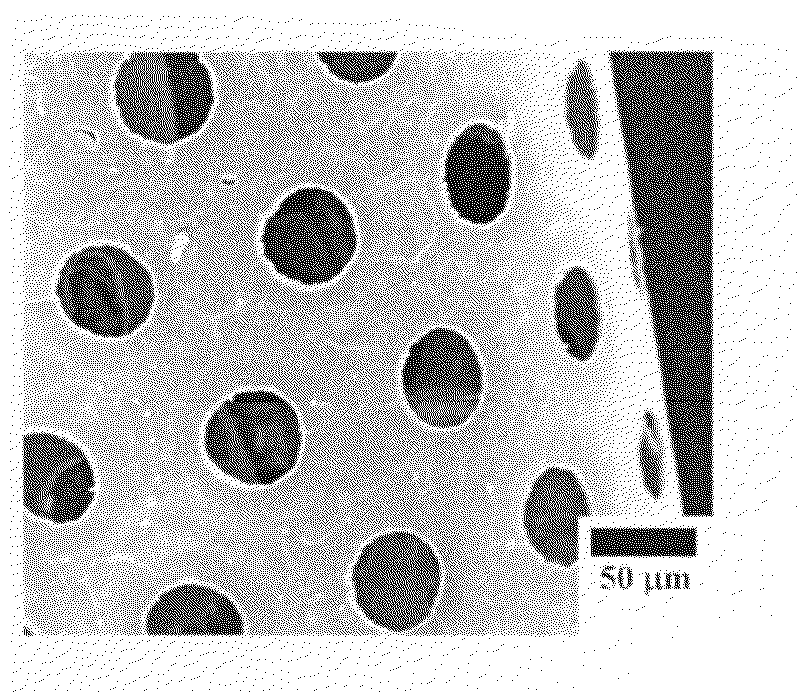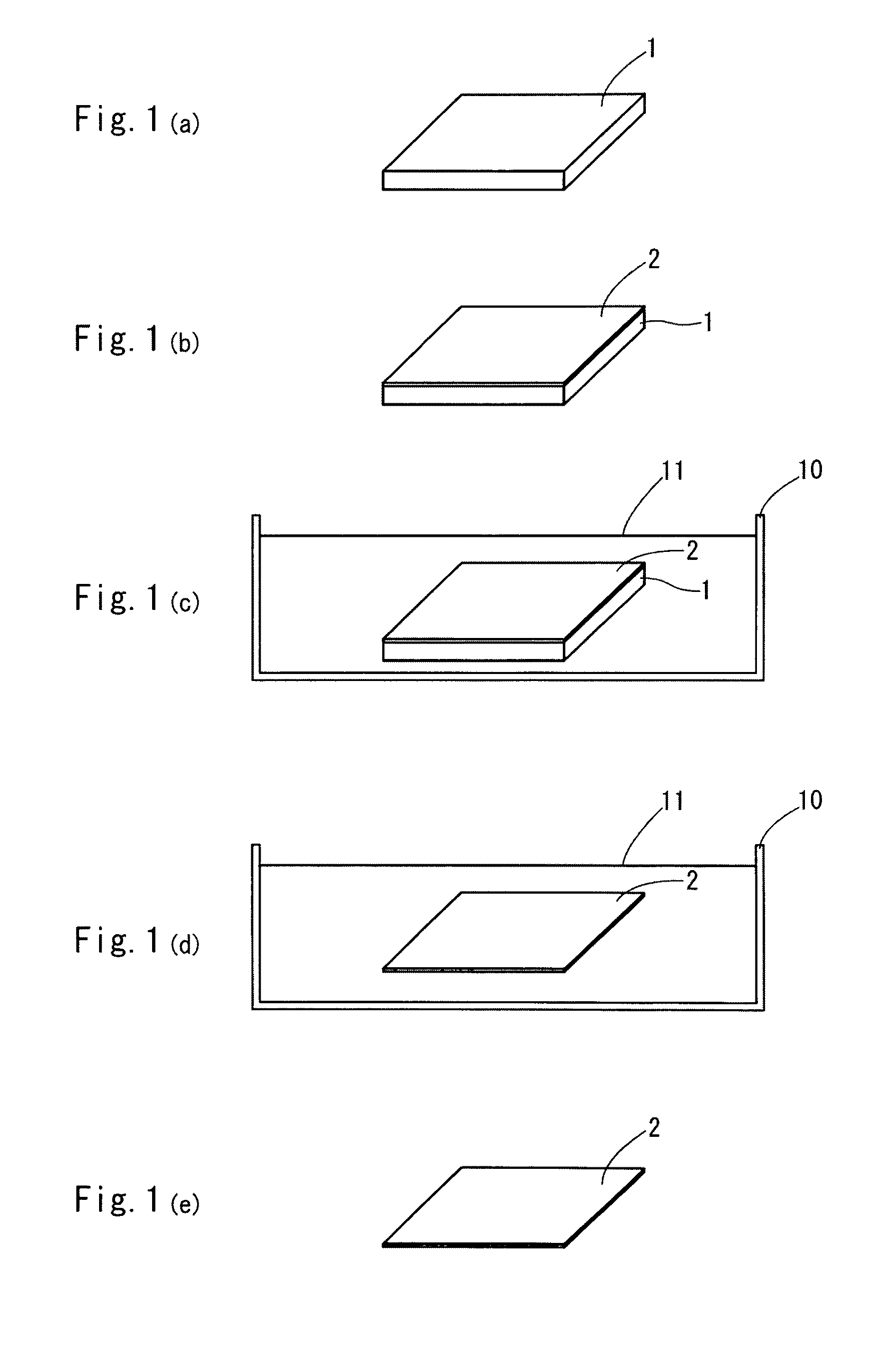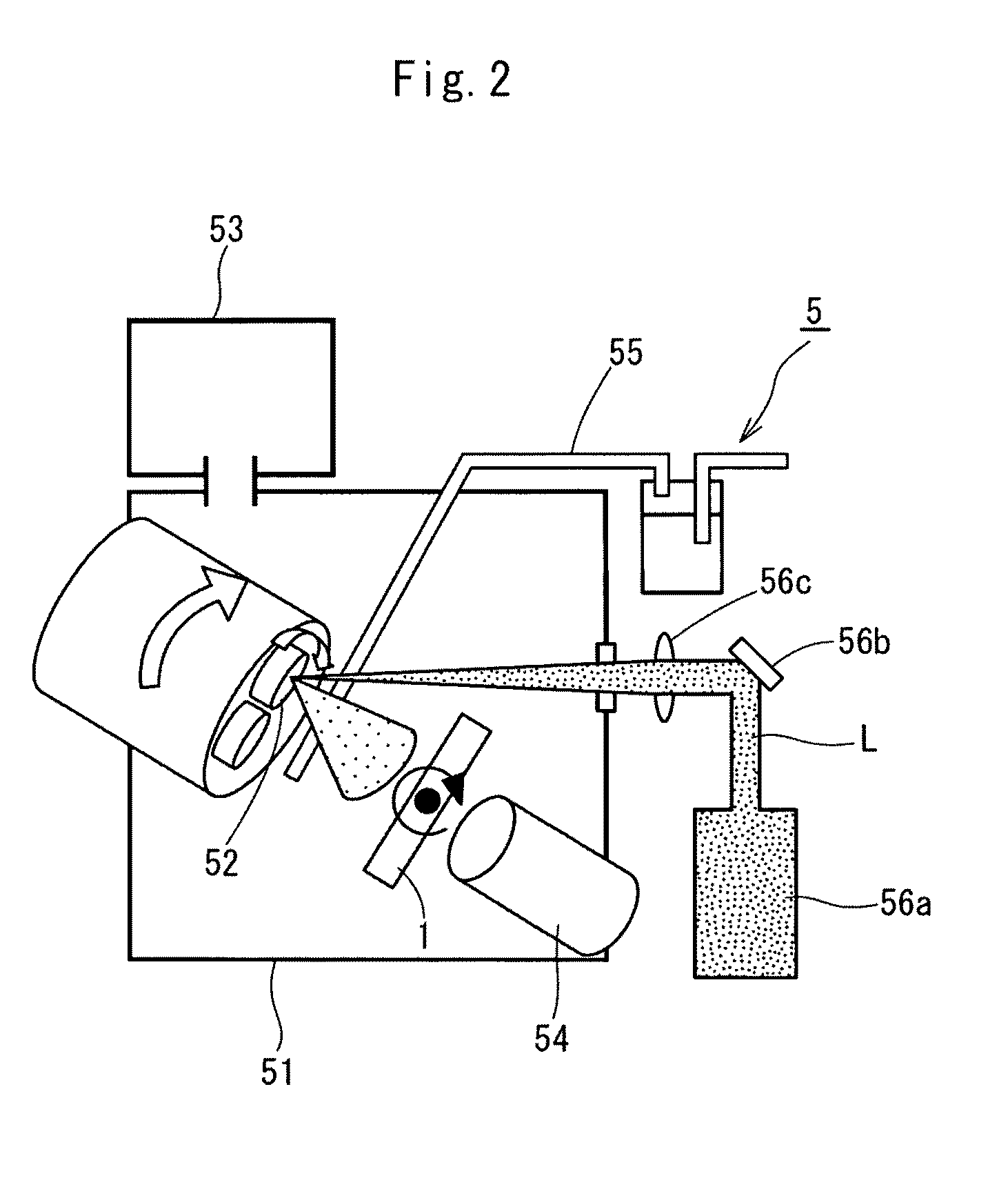Biocompatible Transparent Sheet, Method for Producing the Same, and Cultured Cell Sheet Used the Same Sheet
a biocompatible ceramic and transparent sheet technology, applied in the direction of chemical vapor deposition coating, vacuum evaporation coating, peroxide/peroxyhydrate/peroxyacid/superoxide/ozonide, etc., can solve the problems of limited working range, inability to prepare cell sheets that are absorbed in living organisms after transplantation, and inflexible substrates coated with biocompatible ceramics. achieve high biocompatibility and high bioadheren
- Summary
- Abstract
- Description
- Claims
- Application Information
AI Technical Summary
Benefits of technology
Problems solved by technology
Method used
Image
Examples
example 1
(1) Production of Biocompatible Transparent Sheet
[0051]A hydroxyapatite film is formed on a substrate of sodium chloride crystal through a laser ablation process. In particular, the sodium chloride crystal substrate of 10 mm×10 mm×2.5 mm, was fixed on a sample holder mounted in a laser ablation system (which was designed by Hontsu Laboratory of the biology-oriented science and technology school of Kinki University and was manufactured by Seinan Industries Co., Ltd.) and was then treated for 18 hours by the laser ablation process using an ArF excimer laser (λ=193 nm, a pulse width of 20 nanoseconds), whereby the hydroxyapatite film was formed. The hydroxyapatite film had a thickness of about 12 μm. The temperature of a substrate was 300° C., an atmosphere gas used was an oxygen-steam mixed gas, and the mixed gas had a pressure of 0.8 mTorr.
[0052]The sodium chloride crystal having the hydroxyapatite film formed thereon was dipped in pure water such that sodium chloride was eluted, whe...
example 2
(1) Production of Biocompatible Transparent Sheet
[0054]A 2-mm thick glass plate was surface-treated for four hours by a laser ablation process in the same manner as that described in Example 1, whereby the glass plate was coated with amorphous magnesium oxide at a thickness of 5 μm. A 0.1-mm thick metal mask having holes, arranged in a matrix at intervals of 100 μm, having a diameter of 50 μm was placed onto the glass plate. The glass plate was treated for eight hours by a laser ablation process such that amorphous magnesium oxide pillars with a height of 20 μm were formed, whereby a substrate having surface micro-irregularities was prepared.
[0055]The substrate, which had the surface micro-irregularities, was fixed on a sample holder mounted in a laser ablation system and was then treated for 18 hours by a laser ablation process using an ArF excimer laser (λ=193 nm, a pulse width of 20 nanoseconds) in the same manner as that described in Example 1, whereby the substrate was coated w...
PUM
| Property | Measurement | Unit |
|---|---|---|
| thickness | aaaaa | aaaaa |
| thickness | aaaaa | aaaaa |
| thickness | aaaaa | aaaaa |
Abstract
Description
Claims
Application Information
 Login to View More
Login to View More - R&D
- Intellectual Property
- Life Sciences
- Materials
- Tech Scout
- Unparalleled Data Quality
- Higher Quality Content
- 60% Fewer Hallucinations
Browse by: Latest US Patents, China's latest patents, Technical Efficacy Thesaurus, Application Domain, Technology Topic, Popular Technical Reports.
© 2025 PatSnap. All rights reserved.Legal|Privacy policy|Modern Slavery Act Transparency Statement|Sitemap|About US| Contact US: help@patsnap.com



